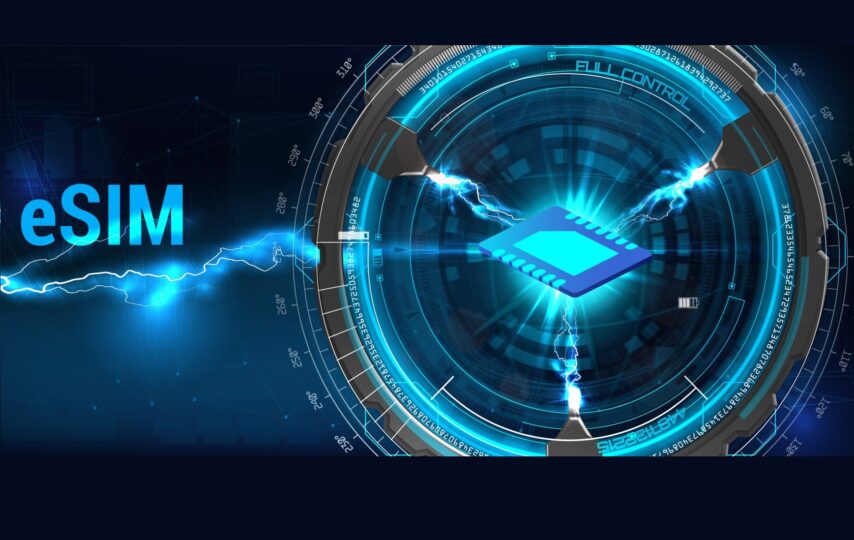The embedded subscriber identity module (eSIM) technology is revolutionising the communications industry and presents mobile network operators (MNOs) with new opportunities for growth and increased market share.
eSIM refers to a programmable SIM that ships out embedded as a chip in mobile phones, wearables, personal telemetry devices, and other gadgets and equipment that require cellular data connectivity, i.e., the ability to access cellular networks.
Mobile network operators, through their own (or a third-party provider’s) remote provisioning platform, can activate and manage eSIMs over the air. Thus, telco end-users can subscribe to a mobile network plan without needing to visit their carrier’s local office or branch.
According to a report by Juniper Research, the eSIM market is valued at $4.7 billion globally (2023) and will be worth $16.3 billion by 2027.
eSIM is particularly empowering for machine-to-machine (M2M) communication and, thus, the enterprises that rely on it. In a 2019 report, Juniper Research estimated that M2M connections via cellular networks will reach 1.6 billion by 2024, a 168% increase from the 596 million connections in 2019.
The Advantages of eSIM for M2M Communication
M2M communication is an essential technology, particularly in the Internet of Things (IoT), as it allows connected devices to communicate and make decisions sans human intervention. eSIM technology enables M2M, providing an attractive alternative to traditional SIM.
For one, eSIM technology can reduce the time and cost of deploying new M2M devices. With traditional SIM, deploying new devices involves inserting or swapping out physical SIM cards. With eSIM technology, new devices can be shipped to their destination immediately and, once there, remotely provisioned and managed.
eSIM technology also provides greater flexibility in network selection and coverage. With a traditional SIM card, a device is locked to a specific network and cannot be easily switched to another network without a SIM swap.
With eSIM technology, devices can easily switch between networks. This is particularly beneficial for M2M communication, as equipment may need to change networks based on coverage and network availability.
Thus, a plastic pipes manufacturing company in Ajman, United Arab Emirates can use M2M eSIM to ensure it never loses communication visibility as its shipment travels from its factory to its clients in Madrid, Spain.
Similarly, an automotive manufacturer in Virginia, USA can send M2M equipment to their factory in Puebla, Mexico without needing to swap SIM cards along the route.
The company can easily switch the equipment network connections to whichever telco can provide the best connection quality and coverage, whether it be AT&T, T-Mobile or, once in Mexico, Telcel Mobile, Altan Redes, or Movistar.
The Opportunities for Mobile Network Operators
The growing demand for M2M communication and the Internet of Things (IoT), and the advent of eSIM translate to a significant opportunity for MNOs.
By providing scalable and flexible solutions for M2M communication that can be customised to meet the specific needs of organisations, operators can help their enterprise customers achieve greater operational efficiency, security, and success.
For their part, telcos can position themselves as key players in the rapidly growing market for connected devices and IoT and enjoy the following benefits:
- Increased Revenues: By offering M2M eSIM solutions, MNOs can offer new innovative services for which they can charge a premium, increasing their revenue streams.
- New Customer Base: Telcos can grow their customer base by offering eSIM solutions to new industries, such as healthcare, retail, and automotive, which are rapidly adopting IoT devices.
- Improved Customer Experience: MNOs can improve the customer experience for IoT device users through eSIM, which allows for remote activation and device management.
- Reduced Costs: eSIM eliminates the need for physical SIM cards, reducing the cost of manufacturing and distributing them.
- Increased Network Utilisation: By expanding to enterprises and providing M2M eSIM services to a broader range of industries, MNOs can increase network utilisation and thus make better use of their existing network infrastructure. This will improve their overall efficiency and profitability.
The Challenges of Implementing eSIM Technology
While M2M eSIM technology represents a business growth opportunity for telcos, it is not without its challenges.
One of the biggest challenges is ensuring compatibility between devices and networks. This is easy with traditional SIM; upgrading requires only a physical SIM card swap.
With eSIM technology, compatibility must be ensured through software, which can be more complex and challenging to manage. MNOs must ensure that their eSIM technology is compatible with their customers’ devices and carriers.
Customer data security and privacy concerns also need to be addressed. M2M devices may exchange sensitive information, so MNOS must invest in robust security systems and protocols, which can be expensive and difficult to implement.
M2M eSIM also comes with regulatory challenges. MNOs must ensure their eSIM offering complies with regulatory requirements.
It’s M2M eSIM or Nothing for MNOs
eSIM technology’s benefits are significant and expected to drive continued growth in the M2M market, particularly in the IoT sector. According to a report by McKinsey, IoT could reach $5.5 to $12.6 trillion in economic value globally by 2030.
Furthermore, the expected developments in next-generation cellular technologies (5G/6G) should enable M2M eSIM enterprise adoption. McKinsey even reports telecommunications companies can experience 10-20% uplift in overall revenues by developing B2B services enabled by next-gen cellular technology.
Indeed, despite the considerable challenges of implementing M2M eSIM, it’s undeniable that M2M eSIM provides enterprises with many advantages.
There is no turning back, and M2M eSIM is here to stay and grow. For MNOs, it’s a choice between adapting and surviving or stalling and decaying.
To take advantage of M2M eSIM opportunities, MNOs must invest in eSIM technology and personnel training. They must also work with device manufacturers, software providers, and other MNO, ensuring their eSIM solutions are integrated with the latest technologies and meet the evolving needs of their customers.








